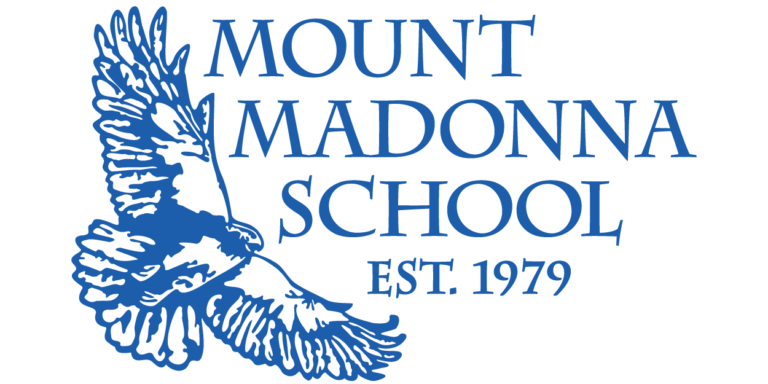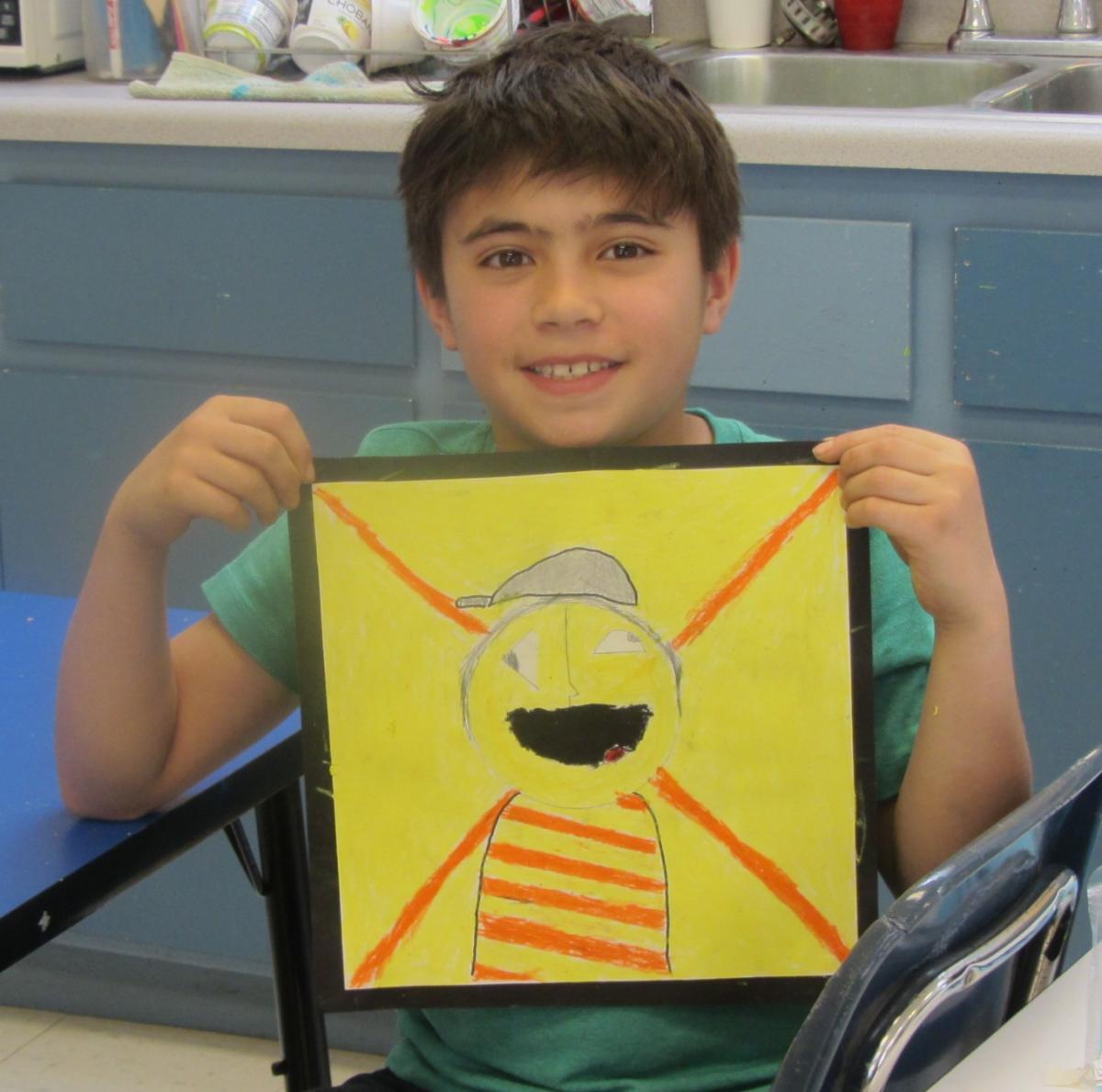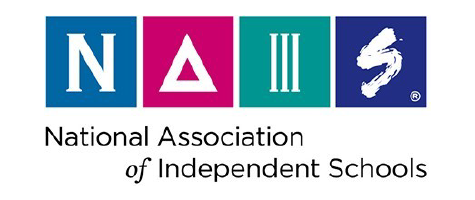 From mariachi and marimba to flamenco, from Dia de los Muertos to the Running of the Bulls, empañadas to tortillas, and songs celebrating the Earth, childhood and more – elementary students at Mount Madonna School (MMS) have spent recent months engaged in learning about the history, geography and diverse cultural traditions of several Spanish speaking countries.
From mariachi and marimba to flamenco, from Dia de los Muertos to the Running of the Bulls, empañadas to tortillas, and songs celebrating the Earth, childhood and more – elementary students at Mount Madonna School (MMS) have spent recent months engaged in learning about the history, geography and diverse cultural traditions of several Spanish speaking countries.This focus is part of an annual in-depth studies of a particular world culture, or this year, a theme – Exploring Diversity in Spanish Speaking Countries. As a culmination to their learning, students, preschool through fifth grade, will share art, performance, dance and song during the Cultural Awareness performances March 24 and 25. The performances will be in the Community Building at Mount Madonna Center; with receptions at 9:00am and presentations starting at 9:30am.
“Cultural Awareness is truly one of my favorite events at Mount Madonna,” shared professional dancer and elementary dance teacher Micha Scott. “The exploration of how dance fits into the lives of cultures other than ours, and finding the connections between us all is a valuable experience. The students are open to trying new ideas and work hard to create something special to share with their families.”

Scott worked with first through fifth grade students, choreographing dances for them to perform; while elementary music teacher Sarojani Rohan introduced and taught traditional songs from the countries each class is studying.
 “It was important for me present the rich variety of dances and music within the cultures,” said Scott. “Together with the students we looked at books, watched dance videos, and listened to music from the different countries represented. We talked about how dance brings communities together, and found that people danced for different reasons, whether in worship rituals, as celebrations for special days, or to represent a historic cultural event.
“It was important for me present the rich variety of dances and music within the cultures,” said Scott. “Together with the students we looked at books, watched dance videos, and listened to music from the different countries represented. We talked about how dance brings communities together, and found that people danced for different reasons, whether in worship rituals, as celebrations for special days, or to represent a historic cultural event.“With first and second grade I found a very powerful piece of music from the Yucatan in Mexico that inspired me to do an Aztec rain dance. The rhythms and instruments in the music challenge the dancers to listen and count in order to be in step together, with lots of room for variation on how they each choose to portray the movements. At the end of the dance they do indeed make it rain!
 “The third graders are presenting a traditional Guatemalan welcome dance. The movements are deceptively simplistic, and they have to work hard to move in unison. The music they dance to is taken from a traditional marimba piece by Guatemalan composer Esau Martinez.
“The third graders are presenting a traditional Guatemalan welcome dance. The movements are deceptively simplistic, and they have to work hard to move in unison. The music they dance to is taken from a traditional marimba piece by Guatemalan composer Esau Martinez.“At the end of their presentation, the fourth graders will ‘dance in celebration’. Their first piece of music is a classic Pasodoble score where the dancers do very typical Spanish dance movements with a dramatic flair. Then flamenco music by composer Cesare Borroni kicks in and the celebration goes into full swing!
“Fifth graders will express the joy of Costa Rican dance through their constant motion, with the girls working their full skirts and the boys working with kerchiefs in both hands. The Caribbean influence of the culture is in the music they dance to, and in the polyrhythms the dancers express in their movements.”
 Preschool and kindergarten students are studying numerous Spanish speaking countries, including the island nation of Puerto Rico. They have prepared and tasted traditional foods, including homemade tortillas, bean and cheese empañadas and pico de gallo salsa; experienced creating colorful registration parrot prints; sewn and stuffed felt parrots; and made Huichol-inspired yarn artworks. With the kindergarteners, teachers shared the story Marita and the Flamboyán, from the book Puerto Rican Folktales by Lisa Sánchez González. Over several weeks, students heard the story, saw it acted out by wool puppets and then donned simple costumes and acted the story out themselves.
Preschool and kindergarten students are studying numerous Spanish speaking countries, including the island nation of Puerto Rico. They have prepared and tasted traditional foods, including homemade tortillas, bean and cheese empañadas and pico de gallo salsa; experienced creating colorful registration parrot prints; sewn and stuffed felt parrots; and made Huichol-inspired yarn artworks. With the kindergarteners, teachers shared the story Marita and the Flamboyán, from the book Puerto Rican Folktales by Lisa Sánchez González. Over several weeks, students heard the story, saw it acted out by wool puppets and then donned simple costumes and acted the story out themselves. For their presentation Pre/K students will perform “good morning” and counting songs in Spanish for the audience, as well as a cheerful rendition of Los Pollitos, while accompanying themselves on their own homemade maracas.
For their presentation Pre/K students will perform “good morning” and counting songs in Spanish for the audience, as well as a cheerful rendition of Los Pollitos, while accompanying themselves on their own homemade maracas.“Our cultural awareness study helps the children to look outwards and expand their vision of the world a little bit,” shared Preschool/Kindergarten Director Hema Walker. “Through exposure to the sights, sounds, tastes and stories of different cultures and different ways of living, the seeds of compassion and tolerance are planted and nurtured.”
First and second graders are learning about Mexico, and one focus is the Selva Lacandona or Lacondan Jungle, an area of rainforest in southern Mexico that extends into neighboring Guatemala. As part of their Cultural Awareness presentation students will perform Pin Pon, a traditional children’s song; and a play set in the Lacondan and inspired by the Brazilian tale of The Great Kapok Tree by Lynne Cherry. With her first grade students, Laffin read The Lorax by Dr. Seuss, stylistically a very different story, but one with a similar message.
 “Through our studies, first and second graders learned that chocolate was first introduced in Mexico,” said Laffin. “We also learned that Mexico has 31 states within its country, which students found interesting. Students are discussing and coloring a map of Mexico, along with learning about its flag and the significance of its colors and center emblem.”
“Through our studies, first and second graders learned that chocolate was first introduced in Mexico,” said Laffin. “We also learned that Mexico has 31 states within its country, which students found interesting. Students are discussing and coloring a map of Mexico, along with learning about its flag and the significance of its colors and center emblem.”To guide her students Mexico explorations, Laffin accompanied her class on a “tour” of the country via imaginary “flights” with glimpses into the country’s landscapes, history and traditions. Through song, she introduced students to the Spanish alphabet and basic Spanish conversational skills. Students are engaged in researching different aspects of Mexican culture, including clothing, dance, music, government, flora and fauna, and creating posters highlighting their learning to share in classroom presentations. The students learned about the Mayan culture, and have made their own commemorative Mayan calendars, a project that integrates mathematics and art, along with the concepts of symmetry and pattern making. These art pieces will be offered for sale at the performances.
 Guatemalan culture is the focus of study for third graders. For their presentation, students will perform a play based on the story The Gold Coin by Alma Flor Ada.
Guatemalan culture is the focus of study for third graders. For their presentation, students will perform a play based on the story The Gold Coin by Alma Flor Ada.“The story explores issues involving notions of happiness, wealth, stealing, and giving,” according to the website, TeachingChildrenPhilopophy.org. “These themes are important to explore, especially in today’s society where there is increasing emphasis on material wealth. By exploring these philosophic issues and delving into a deeper understanding of our own individual views, one can hope to develop a stronger sense of community and intrinsic satisfaction.”
 “The Gold Coin is a favorite book that I read aloud every year and have staged once before,” shared teacher Hamsa Heinrich. “It is poignant story and contains such wisdom. Children’s literature is a regular, beloved teaching tool in my classroom. Good literature is not only well written but full of meaningful and identifiable ways to better understand ourselves, others and the greater world around us. It’s a great link into another culture. A well told story can evoke powerful emotions and images for students, taking them to faraway places with different customs.”
“The Gold Coin is a favorite book that I read aloud every year and have staged once before,” shared teacher Hamsa Heinrich. “It is poignant story and contains such wisdom. Children’s literature is a regular, beloved teaching tool in my classroom. Good literature is not only well written but full of meaningful and identifiable ways to better understand ourselves, others and the greater world around us. It’s a great link into another culture. A well told story can evoke powerful emotions and images for students, taking them to faraway places with different customs.”Students and parents helped gather many resources to look at and read, and their classroom is overflowing with photos, maps, fabrics, clothing, weavings, sample money and books from Guatemala. The students are working individually and in small groups on areas of particular interested from Guatemala to create reports to then share with one another. As a class they also learned the geography of Central American countries and substantial bodies of nearby water. They learned about Guatemala’s varied terrain, volcanos, and the three tectonic plates that contribute to frequent earthquakes.
 In Spanish and art classes third graders studied ancient people, including Mayan traditions and contributions, as well as ruins such as the site of Tikal. Students made small looms and wove cloth in honor of the fine weaving from the area and made Mayan hieroglyphs out of yarn and paper. They read stories and made tiny Worry Dolls as well as performing the script for their play. In addition to performing a traditional welcome dance, the class will sing Que Llueva, a Guatemalan rain song.
In Spanish and art classes third graders studied ancient people, including Mayan traditions and contributions, as well as ruins such as the site of Tikal. Students made small looms and wove cloth in honor of the fine weaving from the area and made Mayan hieroglyphs out of yarn and paper. They read stories and made tiny Worry Dolls as well as performing the script for their play. In addition to performing a traditional welcome dance, the class will sing Que Llueva, a Guatemalan rain song.Fourth graders “travelled” across the Atlantic Ocean to learn about historical and current day Spain. They learned about architecture, art, daily life, traditional foods, religion, and, of course, language; and also studied the Spanish government, and comparing and contrasting it to America’s governmental structure.
Students were introduced to the work of Spanish artists, and created their own Pablo Picasso-inspired self-portraits, as well decorating clay pots with Spanish-style mosaic designs. Different musical styles, including flamenco were introduced, as was discussion about bull fighting and the fiestas of San Fermin in Pamplona – which feature the traditional Encierro or Running of the Bulls.
 For Cultural Awareness the class will perform a play adapted from the book The Story of Ferdinand by Munro Leaf; and Al Pavo Pavito, a traditional Spanish children’s’ song and dance game.
For Cultural Awareness the class will perform a play adapted from the book The Story of Ferdinand by Munro Leaf; and Al Pavo Pavito, a traditional Spanish children’s’ song and dance game.The fifth grade focused on Costa Rica. Students are reading the book Monkeys are Made of Chocolate by Jack Ewing, to learn about the country’s environment and environmental issues it is facing. Students researched different aspects of the country’s culture and then shared reports with their classmates. In class, each student gave an oral presentation that include an art piece or visual aid to their classmates, and as a group, they watched a documentary on the indigenous BriBri tribe, and how the tribe’s medicine men use substances from the natural environment to treat illness.
 Students had a visit with fifth grader Zoey O’Campo’s Costa Rican grandmother, Vyria Briceño who shared what it was like growing up in a large family in a rural part of the country’s Guanacaste province, and what it is like today, living in the country’s capital, San José. Briceño also prepared traditional arroz con leche or rice pudding for students to sample.
Students had a visit with fifth grader Zoey O’Campo’s Costa Rican grandmother, Vyria Briceño who shared what it was like growing up in a large family in a rural part of the country’s Guanacaste province, and what it is like today, living in the country’s capital, San José. Briceño also prepared traditional arroz con leche or rice pudding for students to sample.Students learned about the process of making chocolate, including traditional methods used by indigenous people, as well as the more modern-day process. The class watched a documentary about a Costa Rican coffee farm started by women, their enterprise a means of developing independence and establishing a fair trade plantation in a male-dominated industry. During their weekly Spanish classes, teacher Sara Sobkoviak shares additional details about Costa Rican currency, food and celebrations. And in art class with teacher Hamsa Heinrich, they created felt butterfly hair clips and pins, and painted watercolors, which we be offered for sale at the performances.
 For the show, fifth graders will be performing indigenous myth about the creation of the Earth and oceans. Their story will open with a chant to call Sibu, the BriBri creation god, to introduce the story. Their presentation will include a dance, and a song, En nuestra Tierra tan linda.
For the show, fifth graders will be performing indigenous myth about the creation of the Earth and oceans. Their story will open with a chant to call Sibu, the BriBri creation god, to introduce the story. Their presentation will include a dance, and a song, En nuestra Tierra tan linda.For the finale, first through fifth grade students will be joined onstage by MMS middle school students and led by Spanish teacher Sara Sobkoviak, to sing De Colores.
At the event, Cultural Awareness attendees will have the opportunity to purchase the student-made artworks inspired by the cultures and countries that students studied. Purchases are by donation and proceeds will be gifted to the Colorado-based Americas Association for the Care of Children (AACC).
“When teacher Prema Gammons told me about AACC, I was eager to learn more,” shared Director of Lower School Jenni Leach. “This organization currently helps families in seven countries, the U.S., Nicaragua, Nepal, Kenya, Haiti, Bhutan, and India. Having visited most of these countries myself, I have seen firsthand the poverty and lack of services many people live with, and I’m excited that the teachers chose this worthy organization to donate to, as AACC is working hard to help some of the most marginalized communities.
 “I love that MMS has a social service project tied to our Cultural Awareness program. Kids helping kids, I believe, helps students understand who they are in the world, and that they can make a positive difference in the lives of others. By creating and donating their art pieces to make money that will be used to build schools and educate children, teachers and families, provide food, nutrition and dentist visits, and help communities develop and become sustainable, MMS students learn the values of empathy, compassion, generosity and gratitude. They learn, together, we can make a difference.”
“I love that MMS has a social service project tied to our Cultural Awareness program. Kids helping kids, I believe, helps students understand who they are in the world, and that they can make a positive difference in the lives of others. By creating and donating their art pieces to make money that will be used to build schools and educate children, teachers and families, provide food, nutrition and dentist visits, and help communities develop and become sustainable, MMS students learn the values of empathy, compassion, generosity and gratitude. They learn, together, we can make a difference.”



